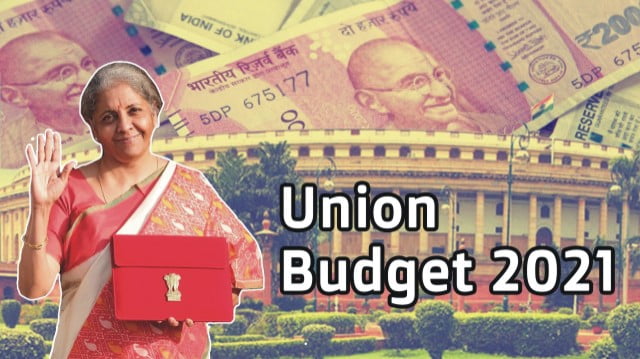

The budget presented by the Indian Finance Minister in Parliament is, to my mind, disappointing, directionless, and unrealistic, though claiming it will make India ‘Atmanirbhar’.
 It lays emphasis on healthcare, building some highways and metros ( especially in states where elections will shortly be held ), and disinvestment of public sector enterprises.
It lays emphasis on healthcare, building some highways and metros ( especially in states where elections will shortly be held ), and disinvestment of public sector enterprises.
But what will these steps do without food and jobs for the Indian people ?
The present ongoing farmers agitation reveals the terrible crisis in the agricultural sector of our economy (3.5-4 lac farmers have committed suicide over the last 25 years as they were in debt), which is because farmers are not getting adequate remuneration for their produce.
Almost in all countries in the world agriculture is subsidised, even in the most advanced country, USA. One can survive without a motor car, a TV set, or other industrial products. But food, like air and water, is absolutely essential for sheer life.
So even if cars, TV sets etc are not produced people can still live. But one cannot live without food.

Hence agriculture is very different from other industries.
It has to be done, and since modern agriculture cannot be done without subsidy, the state must assure that farmers get an adequate remuneration for their produce, because surely farmers will not farm at a loss.
For this, MSP ( Minimum Support Price ) must be given to all farmers ( not just 6% of them, as at present ), but this has not been given either by the 3 laws against which farmers are presently agitating, nor in today’s budget, despite the Swaminathan Committee Report which recommended giving farmers 50% above their cost.
In recent months, the Indian economy has tanked, with a sharp downturn in both manufacturing and sales. The auto sector, real estate sector, etc are in the dumps.
Massive lay-offs have taken place even as unemployment reaches record levels. Every second child in India is malnourished ( see Global Hunger Index ) and every second woman anaemic. Covid has added to the woes. At the same time, prices of food and fuel have soared.

The future looks even more gloomy, and the politicians at the helm of affairs seem to have no inkling how to resolve this crisis.
All they can do is resort to attention-diverting gimmicks, e.g. building Ram Mandir, cow protection, Yoga Day, Swachha Bharat Abhiyan, abolishing Article 370, Citizenship Amendment Act and making Muslims a scapegoat for all the country’s ills (like how Nazi Germany sought to portray the Jews).
What, then, is the real way out of this economic crisis?
The way out is not only giving MSP to farmers but also rapid industrialization of the country, as that alone can create the millions of jobs needed to wipe out unemployment and generate the wealth required for the welfare of the people (for food, education, healthcare, housing, etc ).
However, there is a basic hurdle to rapid industrialization, and that is this: While there is no difficulty in increasing production, the products will not be sold because our people are poor and hence have little purchasing power.
India today is not the India of 1947. At that time we had few industries and few engineers because the policy of our British rulers was broadly to keep us feudal and unindustrialised.
After Independence, however, there was a limited degree of industrialization, and today we have thousands of bright engineers, technicians and scientists, alongside immense natural resources. With these, we can easily step up production rapidly.
The problem, however, is not how to increase production but how to raise the purchasing power of the Indian masses.

In India we have plenty of economists, many having Ph.Ds from Harvard, Yale or the London School of Economics, but no one has any notion how that can be done. I would therefore like to present my own ideas.
In 1914, Henry Ford raised the wages of his workers (in the plant manufacturing his Model T cars ) from $2.25 to $5 per day.
That was of course done to stabilise his workforce, but it did raise the purchasing power of the American masses, as other American manufacturers were compelled to do the same. However, it is unlikely that Indian businessmen will do likewise.
In the Soviet Union, industrialization began in 1928 after the adoption of the First Five Year Plan.
The methodology adopted by the Soviet leaders was broadly this : the government fixed the prices of all commodities and every two years or so lowered them by 5-10 per cent, and sometimes wages were also increased by 5-10 per cent.
Even with the same wage, the worker could now buy more goods, as prices were reduced regularly. This way, the purchasing power of the Russian masses was increased by state action, and thus the domestic market steadily expanded.

Simultaneously, production was also stepped up, and the increased production could be sold as people had more purchasing power. This process went on steadily after 1928, resulting in the rapid expansion of the Soviet economy and the creation of millions of jobs, wiping out unemployment.
This took place at the time of the Wall Street slump of 1929, which was followed by the Great Depression in America and most of Europe, with thousands of factories closing down and millions entering unemployment.
I am not saying we must adopt the Soviet model in India, but whether we do it by private enterprise or state action, we must raise the purchasing power of the Indian masses.
I regret to say that all this has not been seriously addressed in the budget. ![]()
_____________________________
Watch video:

Disclaimer : PunjabTodayTV.com and other platforms of the Punjab Today group strive to include views and opinions from across the entire spectrum, but by no means do we agree with everything we publish. Our efforts and editorial choices consistently underscore our authors’ right to the freedom of speech. However, it should be clear to all readers that individual authors are responsible for the information, ideas or opinions in their articles, and very often, these do not reflect the views of PunjabTodayTV.com or other platforms of the group. Punjab Today does not assume any responsibility or liability for the views of authors whose work appears here.
Punjab Today believes in serious, engaging, narrative journalism at a time when mainstream media houses seem to have given up on long-form writing and news television has blurred or altogether erased the lines between news and slapstick entertainment. We at Punjab Today believe that readers such as yourself appreciate cerebral journalism, and would like you to hold us against the best international industry standards. Brickbats are welcome even more than bouquets, though an occasional pat on the back is always encouraging. Good journalism can be a lifeline in these uncertain times worldwide. You can support us in myriad ways. To begin with, by spreading word about us and forwarding this reportage. Stay engaged.
— Team PT


Copyright © Punjab Today TV : All right Reserve 2016 - 2024 |